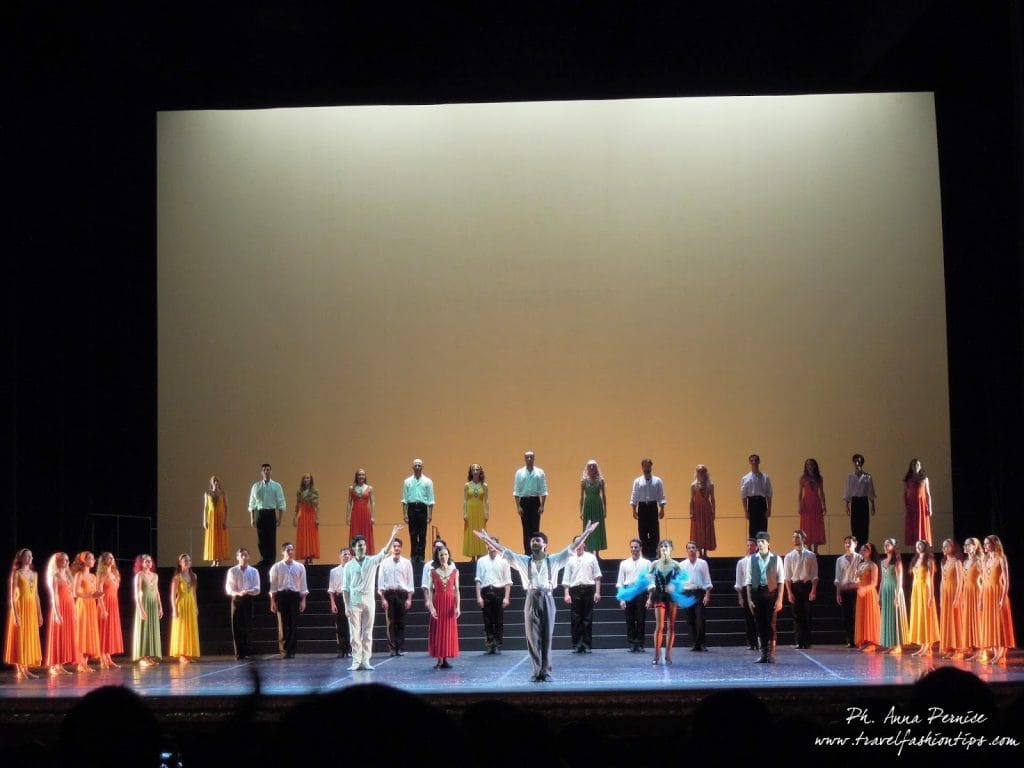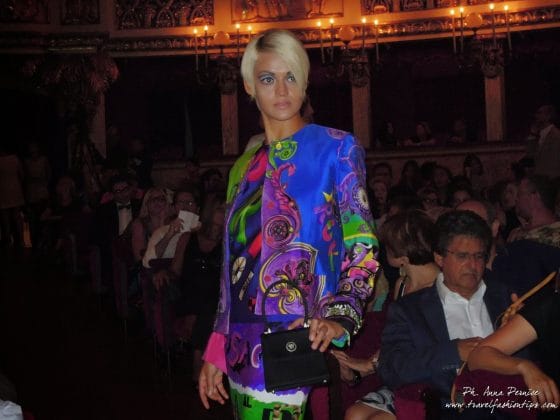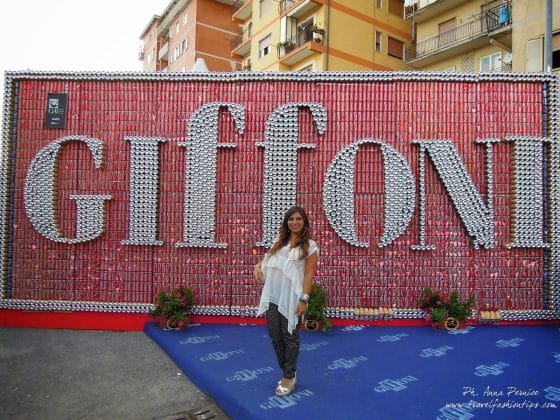Il balletto ovviamente é stato divino, capace di traghettare lo spettatore nel mondo incantato della Grecia senza tempo, in una vicenda umana tutta da scoprire attraverso lavivacità della danza. Il sirtaki, la danza greca riproposta a chiusura dello spettacolo, é allegra, colorata e mette allegria. Completamente ispirato all’omonimo film del regista Michael Cacoyannis, del 1964, tratto a sua volta dall’omonimo romanzo di Nikos Kazantzakis, ha raccontato un altro aspetto della gioia di vivere, la storia di Zorba, uomo greco “percosso da immenso stupore”. Quella stessa vicenda ha cavalcato le scene del San Carlo, su musiche di Mikis Theodorakis trasmettendo, con inarrestabile brio, il senso di libertà, il vorticoso entusiasmo,l’ebbrezza del dionisiaco che palpita in Zorba, trascinante nel celebre Sirtaki, danza che nasce proprio nel film di Cacoyannis probabilmente dall’unione di due balli popolari, il syrtos e il pidiktos, che affascina per i valori di esaltazione dell’amore, dell’amicizia e della celebrazione della vita, che emergono dall’abbraccio dei ballerini.

Come Zorba, eterno simbolo d’amore per la vita, immerso completamente in ogni istante della propria esistenza come parte dell’intero universo, così i magnifici anni ’60 rappresentano una fase di fioritura economica, sociale e del costume nazionale, impressa da sempre nell’immaginario collettivo. Gli anni del miracolo economico italiano, del famoso “boom” indissolubilmente intrecciato alla storia del nostro Paese, vengono celebrati e riscoperti attraverso un evento che mira a coinvolgere, in prima persona, gli amanti della danza. Da Grace Kelly, Audrey Hepburn a Jean Shrimpton e Jane Fonda, passando per Natalie Wood, Brigitte Bardot, Twiggy senza dimenticare Marlon Brando, Cary Grant, Gregory Peck, gli anni ’60 tornano alla memoria anche per lo stile rappresentato nel mondo da immortali icone del cinema che fecero scorrere fiumi d’inchiostro sulle riviste ad ampia diffusione sempre protese, con uno sguardo esterofilo, verso l’oltreoceano.
Nell’opera, Maria Callas fu un assoluto punto di riferimento di bravura e stile nel mondo. Il flower power degli hippie, gli abiti stretti in vita, le gonne a tubino e le bluse a colori pastello, le giacche di tweed, gli stivali gogo alti fino al ginocchio e le saddle shoes stile Oxford: la moda ha espresso una vera e propria fase di liberazione del costume innalzandosi a simbolo della voglia di lasciare un segno, un colore, nel presente.


EN. The San Carlo Theatre has always been an exceptional location for Naples and, for some years, its marketing director, with the support of his young team, is trying to make it more usable by the entire citizenry. It gave rise to the idea of the Versace fashion show as a hymn to the 60 referenced Zorba the greek. The blue carpet, organized under the arches at the entrance of the Theatre, was also accessible by passers-by who were in the area. The 60-year theme was then taken up with much pleasure by viewers of San Carlo, many of whom are dressed in theme and I have dabbled in photograph (find all the pictures below). But this is not the only innovative initiative of San Carlo. For the summer, for example, it has organized cyclical appointments where, in the course of two weeks, starting from yesterday, they will alternate performances of Zorba the Greek, Madama Butterfly and Cavalleria Rusticana with the promotional prices for some days.
Among the special guests of the evening, there was one of the closest collaborators of Madonna, Nicolas Arjona, who arrived in Italy for a number of projects in collaboration with Sabina Albano and Antonio Caravano.
The ballet was obviously divine, capable of leading the viewer into the magical world of Greece timeless, a human story waiting to be discovered through lavivacità of dance. The Sirtaki, revived the Greek dance at the closing of the show, is cheerful, colorful and brings joy. Completely inspired by the eponymous film director Michael Cacoyannis, 1964, based in turn on the novel by Nikos Kazantzakis, it told another aspect of the joy of life, the story of Zorba greek man “struck by amazement.” That same story has ridden the scenes of St. Charles, music by Mikis Theodorakis transmitting, with a relentless spirit, the sense of freedom, the swirling excitement, the thrill of the Dionysian that throbs in Zorba, dragging the famous Sirtaki, dance is born in the film of Cacoyannis probably the union of two popular dances, the syrtos and pidiktos, which fascinates the values of exaltation of love, friendship and celebration of life, emerging from the embrace of the dancers.
As Zorba, the eternal symbol of love for life, totally immersed in every moment of its existence as a part of the whole universe, so the magnificent 60s represent a phase of economic prosperity, social and national costume, printed always in ‘collective imagination. The years of the Italian economic miracle, the famous “boom” inextricably interwoven with the history of our country, are celebrated and rediscovered through an event that aims to involve, in the first person, lovers of dance. Grace Kelly, Audrey Hepburn and Jane Fonda Jean Shrimpton, through Natalie Wood, Brigitte Bardot, Twiggy not forget Marlon Brando, Cary Grant, Gregory Peck, the ’60s come to mind for style icons represented worldwide by immortal movie that made rivers of ink in magazines widely circulated always outstretched, with a look xenophilous towards the overseas.
In this work, Maria Callas was an absolute benchmark of skill and style in the world. The flower power hippies, dresses cinched at the waist, pencil skirts and blouses in pastel colors, tweed jackets, boots knee high gogo and saddle shoes Oxford style: fashion expressed a real Costume rising phase of liberation as a symbol of the desire to leave a mark, a color, in the present.
And I must admit that many of the guests of the San Carlo were able to fully emulate the style of the ’60s through the outfit and the original theme, which you can see in my photos.


















